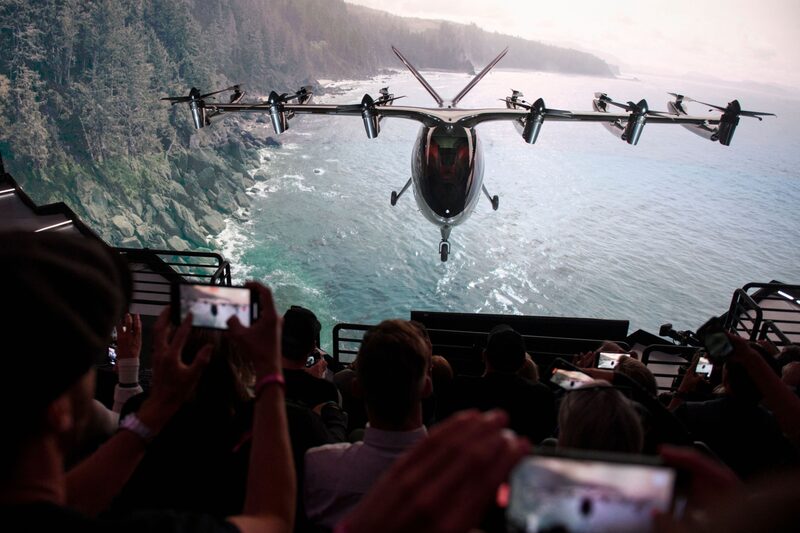Bloomberg — Flying taxis moved a step closer to becoming a fixture buzzing across the world’s urban skyscapes, after startups in the U.K. and Brazil made commercial breakthroughs and a closely watched effort was unveiled in Los Angeles.
Vertical Aerospace Group, based in Bristol, England, won conditional orders for as many as 1,000 electric aircraft that could total $4 billion from buyers including American Airlines Group Inc. and Virgin Atlantic Airways Ltd., it said late Thursday.
Brazil’s Embraer SA separately confirmed it’s in talks to merge its unit developing electric vertical takeoff and landing aircraft, or eVTOLs, into a public company, sending the stock surging.
Read more: Prices for Young Cattle Are Soaring, Signaling Expensive Beef
In California, meanwhile, startup Archer Aviation Inc. showcased its future electric aircraft after earlier nabbing a $20 million investment from United Airlines Holdings Inc. The carrier will buy as many as 200 of the vehicles, dubbed Maker.
While none are yet certified for commercial use, Europe’s top aviation regulator expects approvals for electric flying taxis as early as 2024. Airlines are starting to place orders because they see the potential to develop a new business tied to local movement, as their main activity shuttling people on longer trips comes under pressure over carbon emissions and the impact of the pandemic.
“We believe that this is the beginning of the next big evolution of urban air mobility,” said Domhnal Slattery, chief executive officer of aircraft lessor Avolon Holdings Ltd., which is investing $15 million in Vertical Aerospace. “This is probably as significant as the jet age.”
Flying taxis are designed to accommodate just a few passengers, not dissimilar to an electrified helicopter. But they are quieter, more agile and emission-free utilizing multiple small electric rotors.
The aircraft are designed to make short trips, with a range of 100 miles or less, and are expected to be used ferrying well-heeled commuters above congestion-plagued urban spots -- to the airport, for example, or a weekend getaway. Many eVTOL makers plan to eventually transition to pilotless aircraft.
SPAC Effect
The popularity of special purpose acquisition vehicles, or SPACs, has acted as a catalyst to the budding industry.
Vertical Aerospace is going public through a reverse merger with Broadstone Acquisition Corp. in a deal that values the combined companies equity at about $2.2 billion.
Archer, based in Palo Alto, California, said in February it plans to merge with a SPAC overseen by investment banker Ken Moelis later this year. It’s valued at about $3.8 billion.
Embraer surged 15% Thursday after confirming it’s in talks to merge its Eve Urban Air Mobility division with blank-check company Zanite Acquisition Corp., giving it a valuation of about $2 billion.
Read more: How Trump Hijacked His Party’s Best Resources: Jonathan Bernstein
ModelCapacitySpeedRangeVertical VA-X45 (incl pilot)200mph100mArcher Maker2150mph60mJoby5200mph150mLilium Jet7175mph155mVolocopter VoloCity268mph22m
Two other eVTOL companies, Joby Aviation and Lilium GmbH, have agreed to go public through SPAC mergers. Another German startup, Volocopter GmbH, has backing from airport operator Atlantia SpA and others.
Last week, Eve said it struck a partnership with Halo Aviation Ltd., a helicopter travel provider in the U.S. and U.K., with delivery of 200 aircraft starting in 2026.
Patrick Ky, the executive director of the European Union Aviation Safety Agency, said in May that he expects commercial use of eVTOLs to begin with carrying packages, then passengers.
Unmanned flight will take at least another five years, Ky said, as EASA works on a coordinated approach with the U.S. Federal Aviation Administration and other international regulators.
--- With assistance from Crystal Tse, Gillian Tan and Thomas Black.





